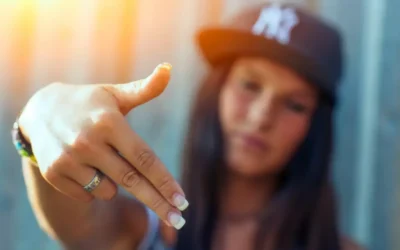Creating art is especially effective for individuals dealing with mental disorders as well as drug and alcohol addictions. For example, consider how the brain can only hold so much information, and it can be difficult to process it all internally. For many people, jotting down a note on paper can not only serve to help them remember the thoughts occurring at any given time, but they may also interpret them differently after viewing it on paper. Taking your mind off triggers and stressors isn’t always easy, but it can certainly be effective.
Drawing or Painting Emotions
This often resulted in death, insanity and most often a total relapse when they were finally released. Another aspect that may strengthen the effectiveness of art therapy is a phenomenon called containment. Containment allows clients to use visual representations to contain difficult thoughts and experiences that might arise during therapy. Scholars believe that art therapy may be effective because the act of creating art strengthens neurological connections in the brain.
Art Therapy Techniques
Now, choose one side for your past self and one side for your current self to represent the change you’ve made from past to present. A https://ecosoberhouse.com/ mountain represents your happiest times, and a valley represents your saddest times. You can add specific events into the artwork.
Creativity for Addiction Recovery?
Opinion Codependency Is a Toxic Myth in Addiction Recovery (Published 2022) – The New York Times
Opinion Codependency Is a Toxic Myth in Addiction Recovery (Published .
Posted: Fri, 08 Jul 2022 07:00:00 GMT [source]
Getting closer to nature can get your creativity flowing and relax you. Traveling opens the mind to new ideas. Pick your favorite place to be in and go there to draw something you want to draw. Create your own permission slip. We all have personal art therapy ideas for addiction traits, but sometimes we view those traits as faults. Create a physical permission slip to give to your future self so that instead of feeling defeated about a personality trait, you may give yourself permission to minimize the feeling of defeat.
Lesley University, Cambridge, MA, United States
As you engage in art therapy and witness your own creative achievements, these sessions become a source of positive reinforcement, helping rebuild your sense of value and self-belief. Another key advantage is the reduction of stress and anxiety. The act of creating art is inherently therapeutic and can induce a meditative state, lowering levels of cortisol (the stress hormone) and promoting a sense of calm. This stress relief is vital in addiction recovery, where managing stress effectively reduces the risk of relapse. FAMILY FOCUSED.The Blanchard Institute cultivates a safe, comfortable environment for clients and families across North Carolina to be emotionally connected to their treatment provider. Our recovery management and alumni programs support a life-long recovery.
Another organization, the Art Therapy Credentials Board (ATCB), monitors art therapists to ensure that they provide quality, ethical care. Another pioneer in the field of art therapy was Margaret Naumberg, the founder of the Walden School in New York. Often called the mother of art therapy, she promoted the approach in the United States. She said that children were healthier and developed better when taught to express themselves creatively.
- Five plus five art therapy ideas.
- ECHO Recovery is a nonprofit foundation and education organization intended to provide tools and resources to those struggling with SUD.
- Plus, be the first to receive exclusive content & discounts.
It’s not just about learning to create art; it’s deeply rooted in the therapeutic process to heal and discover oneself. Art therapy is a blend of science and creativity, designed to tap into your subconscious in a way traditional therapy might not reach. At Blanchard Institute, we provide a variety of evidence-based therapies, like art and music therapy, to assist individuals battling with addiction to overcome their obstacles and achieve long-term recovery. Several limitations of the current study should be noted. First, the findings cannot be generalized to treatment programs located in Veterans Health Administration facilities or based in correctional facilities, since these were excluded from the study.
Positive outcomes during addiction treatment include:

The small number of programs using the latter two forms of alternative therapies precluded further multivariate analyses. The mean for percent female patients and percent adolescent patients was 34.9% and 10.8%, respectively. Turning to the other types of treatments offered, 42.5% of programs used medication-assisted treatment, almost half (47.8%) used MET, and 39.1% used CM. All of the centers using medications also used at least one of the psychosocial therapies. Just over half of the programs (53.1%) required 12-step meetings for their patients. The average logged program size was 2.6, which represented 27.1 FTEs (the median was 12.5 FTEs), while the average age of a treatment program was 28.4 years.
- They are unaware of their emotions and those of others since they are not emotionally aware.
- This book is also aimed at practicing therapists and helping professionals with an interest in expressive arts and ecotherapy.
- Art therapy is a treatment for addiction where those recovering use creative art-making to express feelings and thoughts that are hard to put into words.
- You can find it in many different settings, including residential recovery centers, medical facilities, schools, psychiatric units, and community mental health centers.
- Draw yourself as a plant or animal are the easiest paint therapy ideas.
Combining Art and Music Therapy with Conventional Treatment Approaches
However, when you finally do meet with others who understand what you’re going through, it becomes easier to express yourself and discuss how you feel. Using art can be an effective tool in helping you communicate your feelings without words. When we say distraction, we are referring to your ability to shift your focus from the urge to use substances to release your energy in another, healthier way. Distraction is not always effective or desirable; for example, distracting yourself with TV every time you’re stressed isn’t productive and can actually impede you from getting work done. However, if you’ve been considering picking up a substance again, turning toward art is healthier, both physically and mentally.

